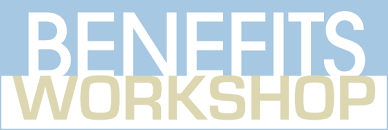Agile Trainings
Agile Project Management Training
Overview
Agile methods are becoming increasingly popular among software companies today. Agile Methods have proven that the best way to develop various software projects with accelerated software development. Increased productivity, reduction of off-shore risks due to customer collaboration and ability to absorb changes in requirements are only some of the important benefits of using agile methods.
In this two-day course, you will apply the Agile Project framework to build a new product. You will learn what it feels like to be on a Agile team experiencing many of the challenges you’re likely to face while being coached by someone involved with the application of Agile Methodologies.
The program uses presentations, situational analysis and group exercises to introduce the above concepts. The highlight of the program is the 60-minute Iteration in which participants would work in groups as Agile teams and will execute a project in a three-day simulated Iteration. This exercise brings out many aspects of Agile and would give the participants a Hands-on feel of how Agile works.
Target Audience
Project managers, senior managers, functional managers, project leads, senior tech leads, Programmers, testers, SQA and database professionals or anyone who wants to understand agile project management.
Workshop Benefits
Participants will learn at the end of the program:
- Learn, practice, and apply Agile to software and technology projects
- Write user stories
- Perform Agile Release Planning, and Agile Iteration Planning
- Estimate user stories and tasks using Poker Estimation
- Deconstruct user stories into tasks and ideal day estimates
- Carryout an Iteration with Daily Stand up Meetings
- End an Iteration with Iteration Reviews and Iteration Retrospectives
- Use Agile with multiple, or distributed, project teams
- Develop insight necessary to apply Agile to real world projects
- Use Agile as a tool for improving collaboration, communication, quality, and team productivity
- Easily pass any Certified Scrum Master or Agile Project Management certification exam
- Use common metrics in Agile
- How to track Agile projects using burn-down charts and burn-up chart
- Piloting Agile successfully
- Keys for successful adoption of Agile
Deliverables
- Course Handbook
- Suggested reading list
- Templates
Certification Information
Participants can claim 16 PDUs for this course


Course Outline
Module-1: Concepts of Agile ( 1.5 hour)
- Agility,what does it mean?
- SDLC traditional approach
- Traditional Vs Agile Approach
- Agile manifesto
- Agile from Programming Perspective
- Agile Team Characteristics
- Benefits of Agile
- Agile flavours – XP, Kanban, AUP, FDD etc
Module-2: Introduction to Scrum ( 45 Min)
- What is Scrum? Essence of Scrum
- What is Iteration? How does it fits in scrum?
- Overview of Scrum Process(Basics)
- Structure of Scrum and scrum framework
Discussion using Agile scenarios
Module-3: Roles( 1 hour)
- The Product Owner
- Why a Product Owner should adopt Agile
- Product Owner responsibilities
- Proxy Product Owner.
- The Scrum Master
- Responsibilities of Scrum Master
- What Scrum Master must not do
- Traits of scrum Master
- The Scrum Team and their responsibilities
Module-4: Artifacts(30 Min)
- The Product Backlog
- The Iteration Backlog
- The impediments list
Exercise: Agile Requirements v/s Traditional Requirements Exercise( 30 Minutes)
Module-5: Meetings ( 45Min)
- Iteration Planning(will be covered in detail after Estimation)
- Daily Scrum
- Iteration Review
- Iteration Retrospective
Exercise: Changing Requirements Scenario (30 min)
Module-6: Estimation in Agile ( 2.5 hour)
- How a Product Owner plans continuously to define the following:
- Vision/ Project charter
- Product roadmap
- Product backlog
- Criteria to prioritize product backlog items.
User Stories:
- Where do User Stories fit in Agile?
- What does a User Story look like?
- Writing User Story
- What makes good User Story
- Epics, Themes in User Stories.
Exercise: Exercise on converting user stories from requirements
- Story Points & Ideal Days
- Example: Assigning Story Points
- Velocity (How and Why estimate Velocity?)
- Exercise: calculation of velocity Exercise
- Estimating Story Points
- Story Points Estimation using poker estimation
Exercise: Applying Planning Poker
Module-7: Planning ( 2 Hour)
Release Planning
- Estimation of Product back Log Size
- Estimating number of Iterations
- Deciding Release date
- Creating Release Burn-down
Iteration Planning
- Identifying Iterations Backlog Tasks from User Stories
- Creating Iteration Backlog
- Creating and Updating Iteration Burn-down
Module-8: Tracking in Agile ( 45 min)
- Tracking releases, Iterations
- Accumulating Burn-down
- Measure Iteration effectiveness
- Discussion using Agile scenarios
Module-9: Agile in Distributed Location ( 45 min)
- Agile in a Distributed Environment
- Distributed Agile Practices
- Communication
- Meetings
- Software Development Practices
- Human dynamics
Module- 10: Other Aspects of Agile( 1 hour)
- Scaling the Agile process
- Agile of Scrums
- Scrums in Multiple teams
- Agile Technical practices
- Refactoring
- Test Driven Development
- Continuous Integration
- Pair Programming
- Tools for Agile
Module- 11: Keys for successful adoption of Agile and suitability of Agile. ( 30 min)
Mock Test Exercise: Agile Simulation Game (Iteration Planning, Execution and release) – 1.5 hour
